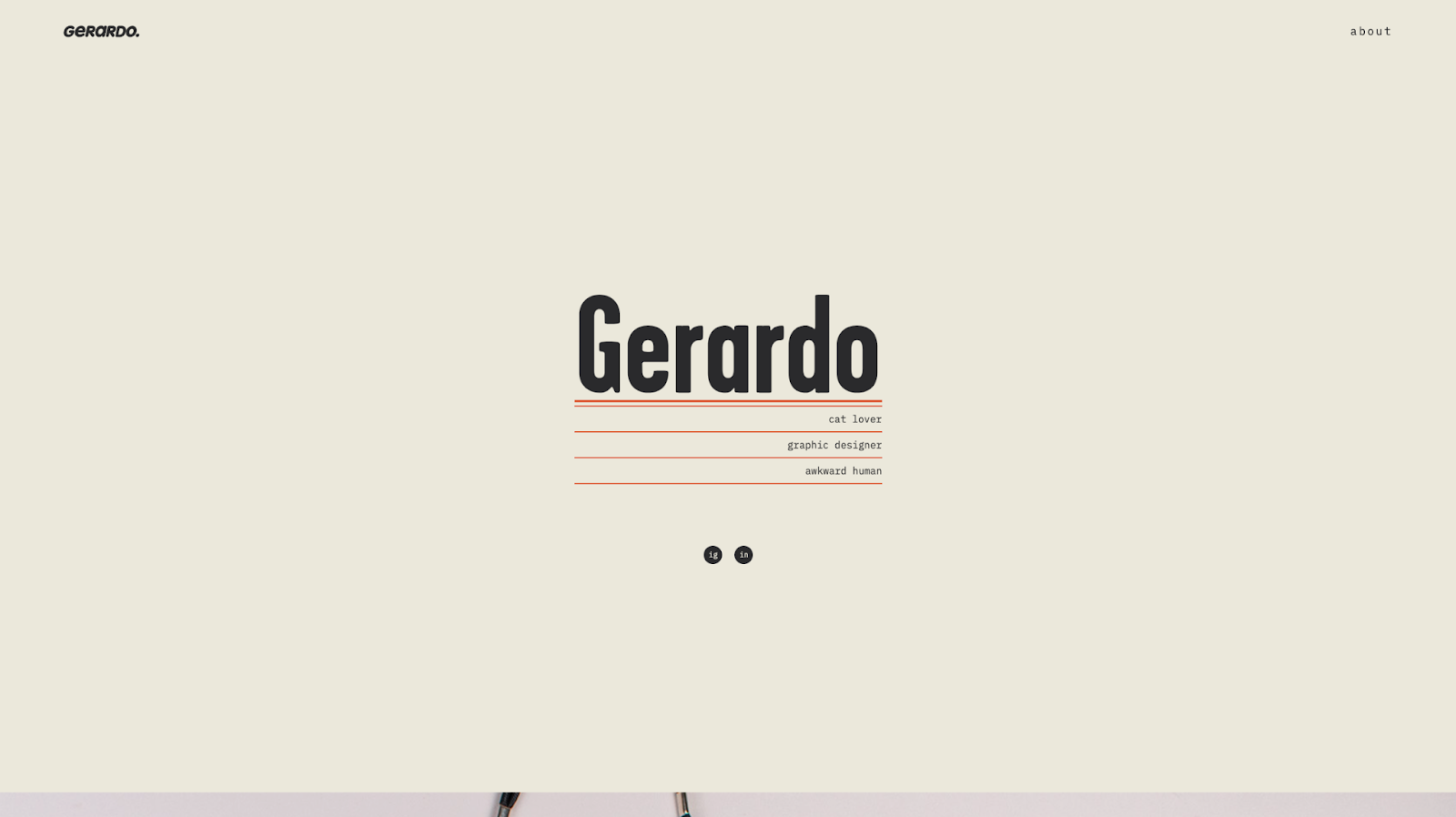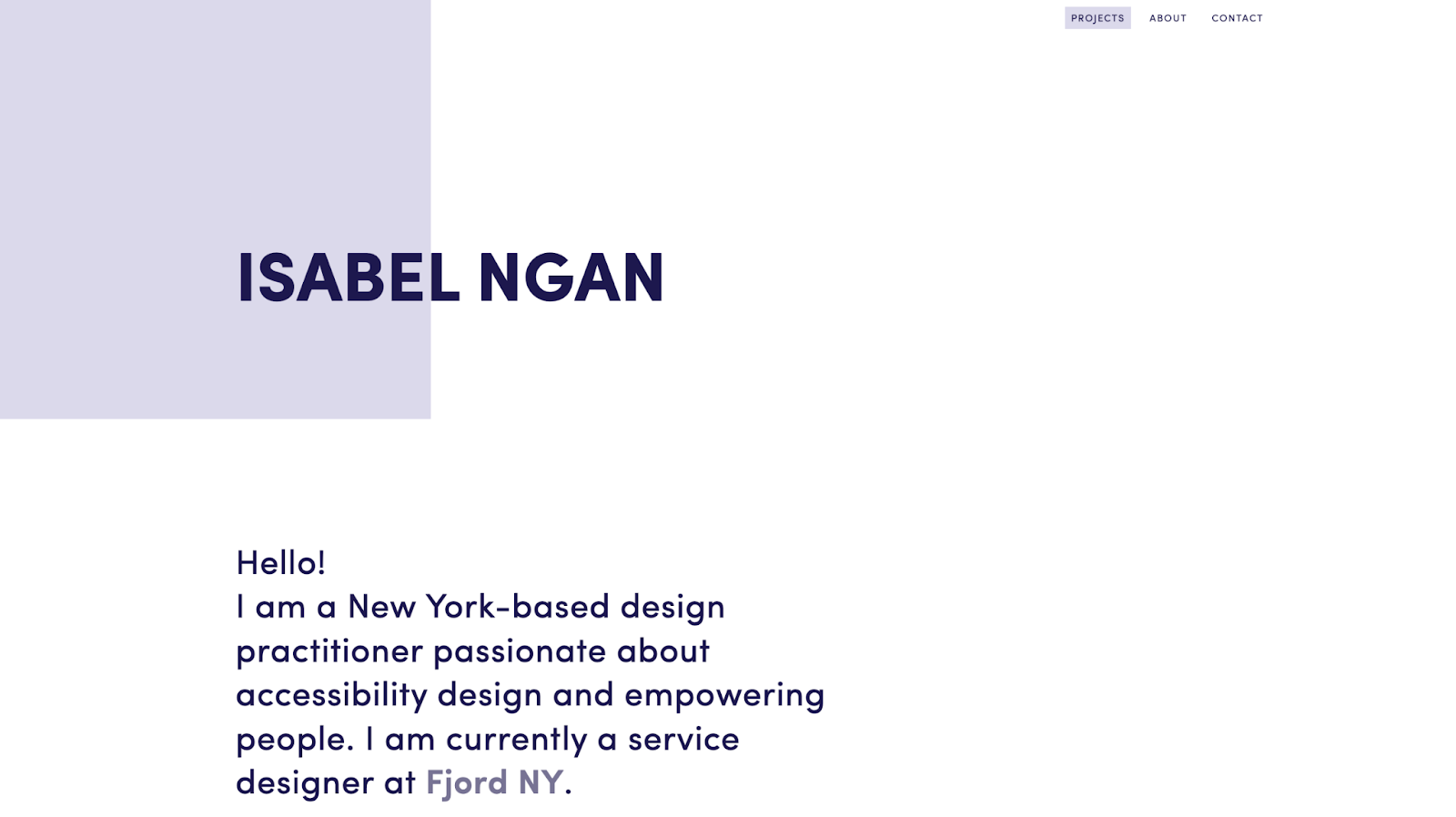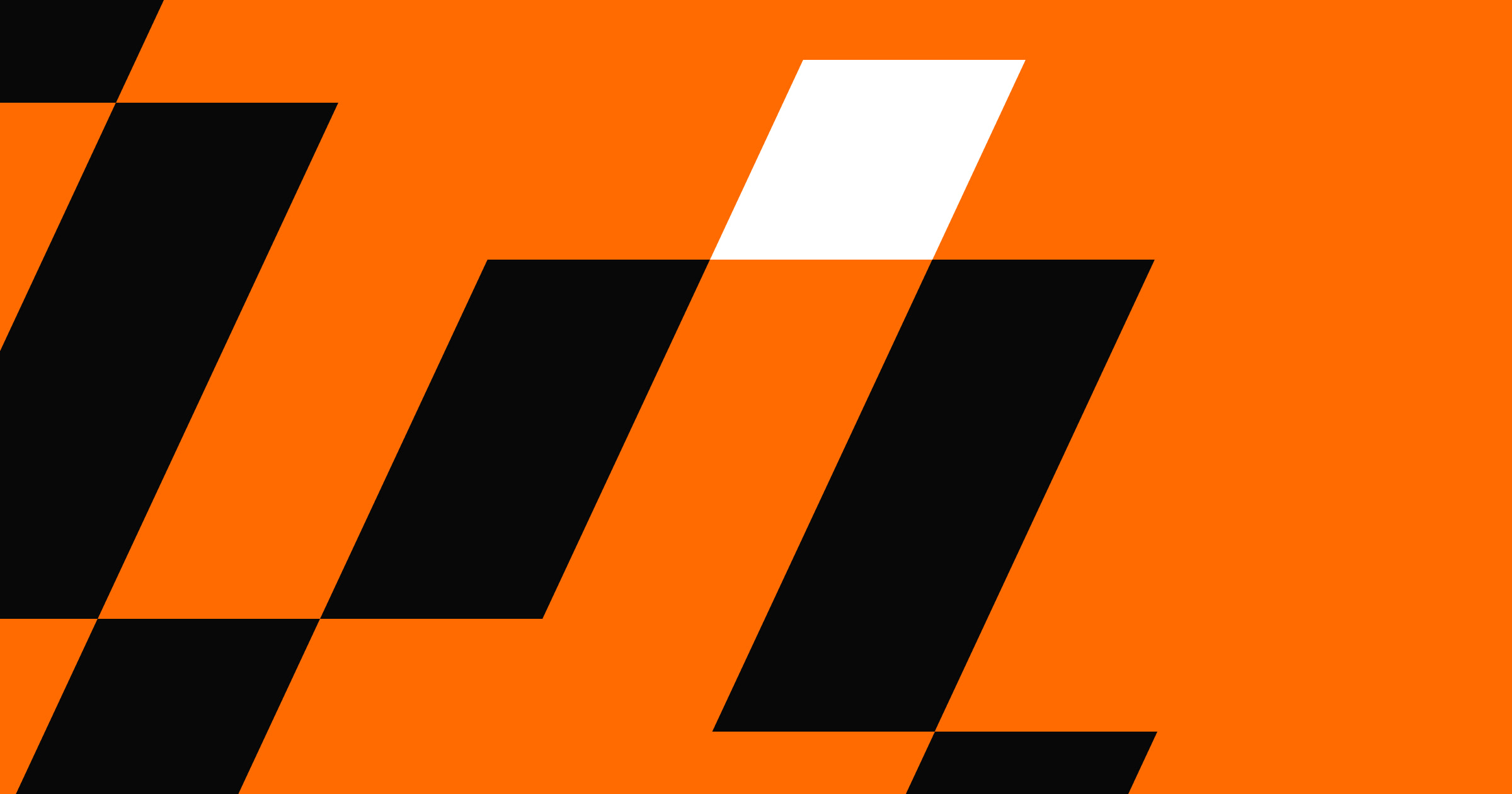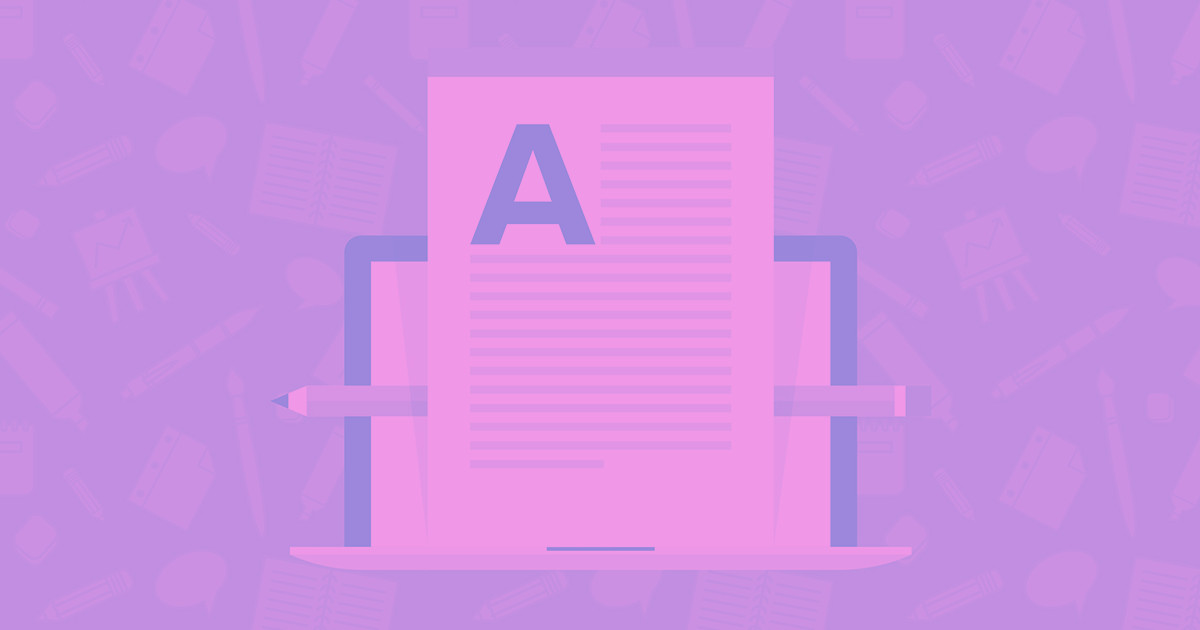Whether you’re a student or a novice kicking off your career, you need an online portfolio.
Gone are the days of a mere CV or physical portfolio. In today’s digital era, e-portfolios are all the rage — and a must, as they are now a staple to the working professional.
While designing your first online portfolio may feel daunting, we’re here to help you climb that metaphorical mountain.
What should a student portfolio include?
You don’t need to have the best student portfolio to land clients or kick off your career. Rather, you need a strong portfolio that demonstrates your craft, skill, learning process, and personality.
What you include in your student portfolio depends entirely on your academic, industry, or professional sector. Nevertheless, every student portfolio should include:
- Leading value or mission statement — An opening one-liner or design motif encapsulating who you are and what you’re doing.
- About me — Provides a clear picture of who you are, your professional and/or academic background, your interests in your field, and any other relevant information you want potential clients or employers to know.
- CV/resume — Includes your educational background, accomplishments, and field-related extracurricular activities or work experience.
- Case studies, student work, or work samples — The idea here is twofold: show your work and quality over quantity. When curating your case studies, as you detail each key stage of your chosen projects, include scans of early rudimentary sketches, images of brainstorming sessions, and other project notes, feedback, and files such as mood boards, wireframes, prototypes, and so on. Also, include your reasoning and decisions as you lay out each case study or work sample. A student portfolio sample with one to two detailed case studies will stand out amongst a crowd of applicants.
- Contact form or field — Whether your email, LinkedIn, or other field-specific platforms, you must ensure potential clients and employers can directly contact you.
Further, clients, employers, and universities want to see your competency demonstrated through your work and learning process. Why? Think back to your math or physics class in grade school. What did your teacher require you to do for you to get full credit for your answers?
Show your work!
If you didn’t, you’d only get partial credit. Why? Because the point isn’t simply solving the equation, but demonstrating your level of comprehension of the subject matter through your ability to solve the equation. It’s a window into your mind, representing one’s depths of understanding, rationale, and competency.
So, just as you would in grade school physics and math class, show your work throughout your case studies, work samples, and other student work.
Pro Tip: Need help presenting your portfolio to get hired or land new potential clients? Check out our complete guide to presenting your portfolio.
9 digital student portfolio examples to inspire you
From academic portfolio examples to professional portfolio examples, here are 9 standout portfolio examples for students.
1. Gerardo Orozco

Gerardo Orozco’s portfolio is an engaging student portfolio. From the get-go, the scroll animations pull you in, as do Gerardo’s playful typography choices and oh-so-clever click-to-reveal microinteractions.
The thing that stands out the most throughout Gerardo’s site is how colorful and playful their case studies are, as well as their ability to work with so many mediums. In addition, the work Gerardo showcases perfectly ties into their career goal of working as a graphic designer in the film industry.
2. Lauren Kim

Lauren Kim’s portfolio directs viewers’ eyes to the site's most important content: her case studies.
Lauren’s curated case studies demonstrate the business impact of her involvement in each project and illustrate Lauren’s learning journey. Future employers want to see the effect of your previous projects and learning process; adding this information could significantly affect your job search.
3. Marino Franulovic

Marino Franulovic’s portfolio differs from the others on this list — he's advertising digital marketing work instead of design. For this reason, his portfolio is more conversion-focused than the others.
Marino’s homepage features engaging scroll animations and hover interactions. His consistent use of color gives the impression of a fully-fledged brand rather than a recent grad’s portfolio, notably with his use of client testimonials as social proof. Further, Marino’s addition of a blog is not only great for SEO, but also demonstrates his competency as a digital marketing expert to potential employers and clients.
4. Greg Chen

If you’re looking for a great way to organize your product pages on your own portfolio, Greg Chen’s e-portfolio is the perfect source of inspiration. He starts each work sample’s project page with a project description and then covers key information like the timeline, team size, tools used, and his role. The detailed project pages cover every step of the process, from storyboarding to prototyping and app UI, highlighting his expertise, thought, and learning process for each project.
5. Onyekachi Nwabueze
![A screenshot of Onyekachi Nwabueze's portfolio website homepage. White background with Onye's signature displayed next to oversized black text, "Hi [waving hand emoji] I'm Onye"](https://cdn.prod.website-files.com/687e8d1b96312cc631cafec7/68c48828d58917e611403029_66453292de13449ecbfdb031_DtIr36UVgYv_iiT5RxaFNyEG-__YHAcCo8e_jx4RbhnusxOUq22hrMEKnx-JSfa62FXNOXfLNN2rRk5D89bRyIkcn3SF7hpF7Zxxn1MC4AQQ5soVJnTZ4n_De-_25BF-0OZ95oHSy-JcqD3-NhpzSKw.png)
Onyekachi Nwabueze’s portfolio greets you with a signature and a waving hand emoji, immediately giving you an idea of her playful personality and personal brand: an educator-turned-designer, with UX playing a strong role in each of her projects.
Scroll-triggered animations smoothly update content as you scroll through the page. Using black and white as the base for her website allows Onye to easily shift our focus to her projects, which appear as colored images.
The asymmetrical project layout on Onye’s homepage and fun hover interactions reflect her playfulness and — this theme runs throughout her portfolio — her personality. This inclusion can do wonders to show a future employer what kind of person you are and how you’ll fit in on their team.

Launch with Webflow Templates
Choose from hundreds of professionally designed website templates for any industry or style. Customize visually, launch instantly — no coding required.
6. Isabel Ngan

Isabel Ngan’s portfolio makes great use of white space, directing visitors straight to her work. The soft lilac color emphasizes the projects and written content, making project images, design process screenshots, and copy stand out.
Her homepage also acts as her projects page, allowing visitors to view what they’re there for immediately — and thanks to the tiny hover states and micro-interactions, scrolling through is a joy.
When you click on any of Isabel’s projects, you’ll see some of the most detailed processes, with each showcasing the steps she took to achieve the end result. The footer of Isabel's portfolio provides all her contact information and links to social media, making it easy for future employers to get in touch.
7. Lauren Hung

Lauren Hung's homepage immediately paints a picture of who she is and what she does best. The different fonts in this portfolio provide a hierarchical structure to Lauren’s content, which makes for a delightful browsing experience.
The takeover project descriptions on the homepage immerse visitors in Lauren’s work, inviting them to learn more. Her resume acts as a CTA in the navigation, showing that she is open to new opportunities and encouraging potential employers to get in touch.
Lauren’s about page includes a paragraph titled “Where I’m Going.” This section gives potential clients insight into her personal and professional aspirations, as well as where she could fit within a team. Personal touches like this one are often overlooked in portfolios but can have a considerable impact.
8. Akshaya Madhavan

Akshaya Madhavan’s homepage is simple and showcases their best work. The project pages outline Akshaya’s role in the project, their skills, and the software that helped the project come to life. Akshaya also includes the number of people involved in each project, an excellent way to demonstrate that they, too, are team players.
Akshaya’s portfolio is laser-focused on finding the right employer. It’s a great example of using past work experience and personal touches to attract potential clients and employers.
9. Cydney Vicentina

When you reach Cydney Vicentina's portfolio website, a playful animated opening immediately grabs your attention. As you scroll, each project has a short title, a quick summary, and the design skills Cydney used to create each project.
Design students can learn something from Cydney’s case studies. She writes in the first person, allowing each case study to tell its story in a more personable, memorable way. This unique feature of Cydney's portfolio showcases their ability to construct a story and narrative through detailed project files, simplistic user experience, and eloquent web design.
Ready to build your own student portfolio?
If you’re feeling inspired after checking out these fantastic portfolios but don’t know where to start, don’t worry. There’s a whole Webflow University course that introduces students to the web builder and teaches how to build a portfolio quickly without code. Check out the 21-day portfolio course to get started.
For prebuilt student portfolio templates, Made in Webflow is another excellent resource for design inspiration. The open-source platform features free cloneables for all types of portfolios from designers at every stage of their professional careers. You can also browse Webflow's template marketplace to see tons of free and low-cost templates you can use to power your student portfolio’s design.

Show off your work.
Choose from fully customizable portfolio templates built for creatives. With Webflow, you can design, refine, and publish a standout portfolio — without writing a single line of code.






.jpeg)
























